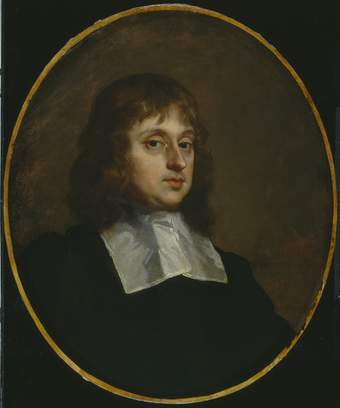
Fig.1
Unknown artist, Britain, Attributed to John Greenhill
Portrait of Richard Colman c.1660
Tate
T07113
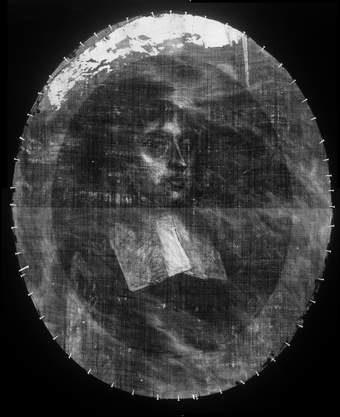
Fig.2
X-radiograph of Portrait of Richard Colman
This painting is in oil paint on canvas measuring 704 x 590 mm (fig.1) The oval support is a medium-coarse, plain woven linen canvas with a thread count of 15 vertical and 16 horizontal threads per square centimetre. The threads in both directions are very uneven in thickness. Pronounced cusping is visible at the top and bottom edges (at least 14cm into the picture plane) but there is only one other hint of weave distortion – halfway up the right edge; this may mean that an original canvas selvedge lay a few centimetres beyond this feature (fig.2).1 The linear direction of the cusping indicates that the canvas was rectilinear when the priming was applied. The sitter appears to be at a slight angle to the vertical but there is little evidence to indicate that much of the composition has been lost. Four raised lines in the paint, forming a square (450mm by 340mm) around the sitter’s head, are evident in raking light. These may represent marks from the inner edges of the bars of an earlier stretcher but they do not appear to be aligned with either the canvas weave or the image.
The original canvas is glue lined to linen canvas and attached with steel nails to an oval, pine, stretcher, which looks to date from the late nineteenth century. The lining is in an adequate condition apart from a very lumpy area at the top left section. This unevenness is caused by a lead white-based filling between the original support and the lining canvas. It is apparent on the X-radiograph (fig.2), where it reveals the weave of the slightly coarser lining canvas. Unlike the original support this fabric has cusping which relates to the oval format, but it does not correspond to the present tacks. A possible explanation is that the filling compensates for the loss of original canvas in preparation for an earlier lining, now replaced by the existing one. This top left-hand area also includes an earlier tacking edge which now forms part of the picture surface. Other lumps in the surface of the paint, such as in the sitter’s black jacket, are attributable to this same filling material. The picture’s edges are protected with gummed paper tape.
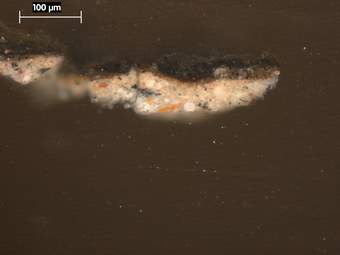
Fig.3
Cross-section taken from the shadow in the black jacket, 10mm from the edge, photographed at x250 magnification. From the bottom of the sample upwards: pinkish grey ground (not the full thickness); greenish brown background paint; black paint of jacket, where it just overlaps the reserve left for it in the background; varnish
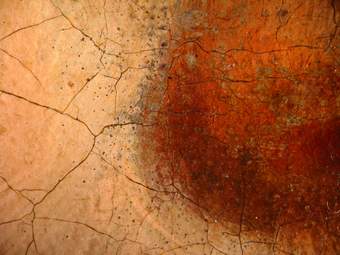
Fig.4
Photomicrograph at x8 magnification of the side of the nostril, showing the ground left just visible to define the feature
The ground is a pinkish grey colour, composed of lead white, charcoal black, red lead, raw sienna, chalk and Cologne earth all bound together in oil (fig.3).2 It is slightly gritty in texture, though applied smoothly. The painter has utilised its tone for some of the half-shadows in the face (fig.4).
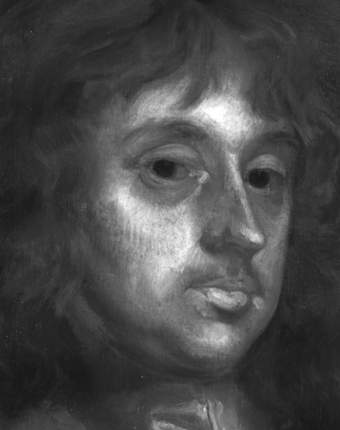
Fig.5
Infrared reflectogram of the head
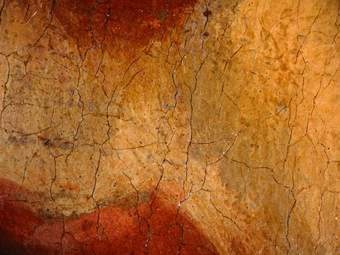
Fig.6
Photomicrograph at x8 magnification of the filtrum between the nose and mouth
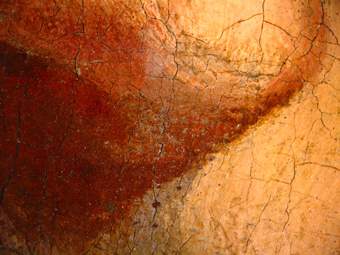
Fig.7
Photomicrograph at x8 magnification of the end of the nose and nostril
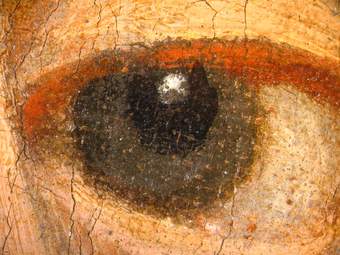
Fig.8
Photomicrograph at x8 magnification of the left eye
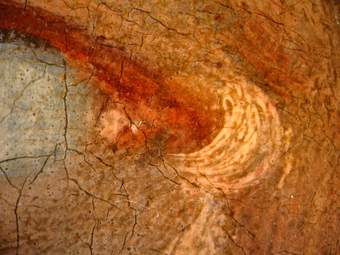
Fig.9
Photomicrograph at x8 magnification of the inner corner of the right eye, showing bluish grey paint scumbled over white for the curve of the eyeball
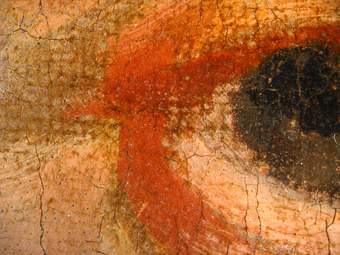
Fig.10
Photomicrograph at x8 magnification of brushwork at the outer corner of the right eye
No underdrawing was detected with any form of examination. Infrared reflectography reveals the lively brushwork in the face and hair (fig.5). The paint is largely opaque and was applied with free brushwork working wet-in-wet, usually from dark to light (figs.6–10). Though the degree of wear makes it difficult to judge, it seems that the simple composition was well planned with a reserve left for the head, hair and collar when the background was laid in. No pentimenti were detected. The dark passages, for example his coat, the left background, parts of his hair and the shadows under his chin, have all been strengthened with much later paint to mask early abrasion of the original. An inscription in red paint in the lower right section has also suffered abrasion. There is also much modern retouching in this area. His right cheek, chin and right side of the nose have strokes and patches of discoloured retouching.
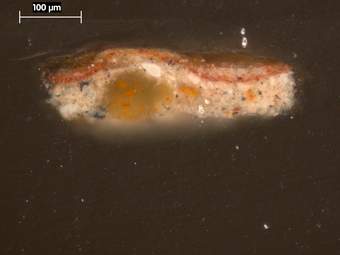
Fig.11
Cross-section taken from the right hand corner of the mouth, 272mm from the right and 309mm from the top, photographed at x250 magnification. From the bottom of he sample upwards: pinkish grey ground (not whole thickness) with a lead soap aggregate on the left side; two shades of pinkish red applied wet-in-wet for the mouth; varnish

Fig.12
Photomicrograph at x20 magnification of lead soap aggregates in the jacket
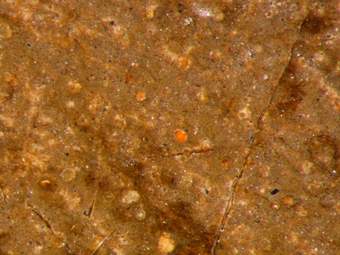
Fig.13
Photomicrograph at x2 magnification of lead soap aggregates in the background
The dark background contains mixtures of the following pigments: lead white, chalk, glass, pipeclay, earth colours, umber, bone black, red lead and vermilion. The presence of red lead is likely due to mineralisation of the lead soap aggregates that developed in the ground and are by now disrupting the paint surface throughout the composition; the red lead is mostly found in localised spots (fig.11). The aggregates protruding through the paint surface are particularly noticeable in the flesh paint and the black jacket (figs.6–10 and 12–13), some of them appearing as circles of red lead and others looking more whitish and transparent. They contribute to the worn appearance of the paint.3
The varnish is slightly yellowed.
